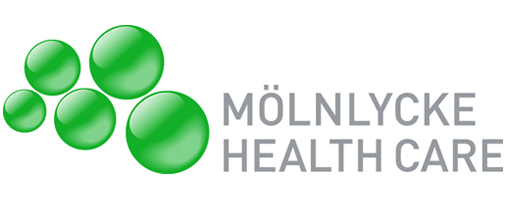Team:Chalmers-Gothenburg/Discussion
From 2012.igem.org
(→Expression of the gene for the LH/CG receptor in yeast) |
(→Discussion of results and future perspectives) |
||
| Line 59: | Line 59: | ||
='''Discussion of results and future perspectives'''= | ='''Discussion of results and future perspectives'''= | ||
| - | ==''' | + | =='''Production of indigo in yeast== |
| - | ==''' | + | =='''The LH/CG receptor: problems, solutions and possibilities'''== |
When analyzing our results, we have identified several possible reasons that may have led to the biosensor being unable to detect the hCG hormone. Below, we discuss these and also present some ideas on how to take our project further and improve our study. | When analyzing our results, we have identified several possible reasons that may have led to the biosensor being unable to detect the hCG hormone. Below, we discuss these and also present some ideas on how to take our project further and improve our study. | ||
Revision as of 17:01, 25 September 2012
Contents |
Discussion of results and future perspectives
Production of indigo in yeast
The LH/CG receptor: problems, solutions and possibilities
When analyzing our results, we have identified several possible reasons that may have led to the biosensor being unable to detect the hCG hormone. Below, we discuss these and also present some ideas on how to take our project further and improve our study.
1. The hCG hormone could not pass the yeast cell wall
We were aware of the risk that the hCG hormone, due to its size and due to the limited permeability of the yeast cell wall, would not be able to pass the cell wall and therefore not reach the receptor. This is the reason that the ΔCWP2 strain was created and that the initial fluorescence screenings were done using cells that had been treated with cell wall-degrading enzymes. Despite these efforts, there is a small risk that the hCG hormone never reached the receptor, which would then explain the lack of a successful detection. However, we deem this to be relatively unlikely. At least the lyticase treatment should have allowed some hCG to reach the receptor.
If, however, further investigations would show that the cell wall permeability of the Δcwp2 strain is still too limited for hCG to pass, one could also try to delete the gene CWP1 in order to increase the permeability additionally [1]. But there are also several other possibilities to weaken the cell wall, for example the deletion of genes whose corresponding proteins contribute to the assembly of the cell wall or knock-out of other cell wall components.
2.The receptor only mediates weak signals
The receptor might be able to bind hCG but, due to inefficient interaction between the receptor and the yeast G alpha, only partially induce the activation of the pheromone pathway. This is a common problem when expressing human GPCRs in yeast and that is the reason why strains with chimeric G alpha proteins have been used when expressing the LH/CG receptor. Since these chimeric G alpha proteins have had the last 5 C terminal amino acid residues of the yeast G alpha protein replaced by the corresponding human amino acids, they should enable the human receptor to couple with the G alpha subunit while still preserving the G alpha ability to interact with G betagamma complex. Still, it might be so that the LH/CG receptor interacts inefficiently with the yeast G protein and thus only produces a very weak output signal. This may then be the reason why our biosensor was unable to produce a noticeable signal in response to detecting hCG.
If the LH/CG receptor only produces a weak output signal, the background noise of GFP expression when examining our cells in the fluorescence microscope would have made it difficult to identify cells that actually displayed signal-induced expression of GFP. To improve analysis, a next step could therefore be to use flow cytometry. This method enables comparative quantification of the GFP signaling in whole cell populations [2] and may then enable even weak signal-induced GFP expression to be distinguished from the background noise.
Another possible step to solve the potential problem of a weak signal would be to amplify the signal. A method designed to this was developed by Fukada et al in 2011. Their strategy involves invoking positive feedback in response to activation of the signaling pathway. This is done by placing both the gene for the yeast G beta subunit and the reporter gene under the control of the FIG1 promoter. Thus, when a ligand binds to the receptor, the Gbeta is overexpressed and can compete with the endogenous Gbeta for bindinf the G alpha subunit. This competition would allow G betagamma complexes to be released and to activate the signaling pathway once again thereby amplifying the weak signal and increasing the expression of the reporter gene [3].
3. The receptor is not functional when expressed in yeast
There is always a risk when expressing a protein in another host that the protein will not be functional. This might be due to an incorrect fold or that the protein did not get the proper post-translational modifications. The LH/CG receptor, when expressed in yeast, might have lost its correct conformation, been unable to integrate properly into the yeast cell membrane and therefore also be unable to bind the hCG hormone. Mammalian proteins will be glycosylated in a significantly different manner when expressed in yeast. This might be a potential problem for the LH/CG receptor, which has a number of glycosylated sites. According to literature, these glycosylations are not important for ligand binding and signal transduction, but they might be important for proper integration of the receptor into the membrane[4]. This may then explain why the receptor is non-functional in yeast.
As a further step, we would like to determine the location of the LH/CG receptor when expressed in yeast. This could be done by, for example, placing a fluorescent tag on the receptor and would enable us to see whether or not it has been integrated in the yeast membrane or if it has been retained in the cytosol.
If it turns out that LH/CG successfully has been integrated in the membrane but that the receptor is unable to function properly, we would also like to try to reengineer the receptor. In previous studies deletion of foremost intracellular loops has proven to increase the stability and activity of some GPCRs when expressed in yeast[5]. This might be something that could be applied to the LH/CG receptor as well since it does have several large intracellular loops.
References
[1] Zhang M, Liang Y, Zhang X, Xu Y, Dai H, Xiao W. Deletion of yeast CWP genes enhances cell permeability to genotoxic agents. Toxicological sciences: an official journal of the Society of Toxicology. 2008;130(1):68-76. [2] Ishii J, Moriguchi M, Hara KY, Shibasaki S, Fukuda H, Kondo A. Improved identification of agonist-mediated Gαi-specific human G-protein-coupled receptor signaling in yeast cells by flow cytometry. Analytical Biochemistry. 2012;426(2):129-133. [3] Fukuda N, Ishii J, Kaishima M, Kondo A. Amplification of agonist stimulation of human G-protein-coupled receptor signaling in yeast. Analytical Biochemistry. 2011;417(2):182-187. [4] Petäja-Repo UE, Merz WE, Rajaniemi HJ. Significance of the carbohydrate moiety of the rat ovarian luteinizing hormone/chorionic-gonadotropin receptor for ligand-binding specificity and signal transduction. The Biochemical Journal. 1993;292(3):839-844. [5] Ladds G, Goddard A, Davey J. Functional analysis of heterologous GPCR signaling pathways in yeast. Trends in Biotechnology. 2005;23(7):367-373.
 "
"






